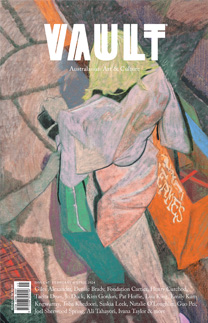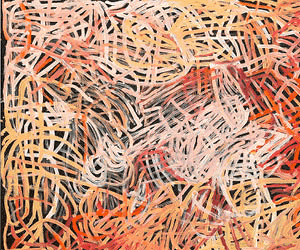Imants Tillers:
and the dilemma of cultural appropriation
VAULT’s writer Louise Martin-Chew speaks to one of Australia’s greatest living artists about his ongoing practice and the inherent tensions at play in his work.
Counting his output of painted canvas board panels has taken on the inexorable visual rhythm of a ticking clock in the practice of Imants Tillers. Since 1981,
the artist has numbered his work painting, by painting, to produce an overall body of work. This strategic approach to his work sees each single canvas board become integral to a larger painting, but also part
of a cumulative Book of Power (1998).
Fran Clark, Director of Melbourne gallery ARC ONE, says, “Every painting is like a page, all paintings are numbered and part of certain chapters. He goes in and out of these chapters. Everything is connected.”
The literary analogy is apt, as text is integral to these works: they intersperse quotations and words coined by writers, critics and other artists – invariably in
the same capitalised font – with structured landscapes and patterns borrowed
from a First Nation’s visual language, alongside abstraction, and a range of other rich imagery.
Today, he is one of Australia’s most respected artists. He began working with small canvas boards in the early 1980s, joined together once hung to create large-scale paintings. Tillers says, “This was a moment when painting was being reinvented internationally and in Australia. I came to it after a decade of conceptual art. The canvas boards had an amateur association. I wanted to use them to make large-scale works in the spare room of my flat and this was one way you could do it. Now I have painted 108,000 panels .. Subscribe to read this article in full

























